Cuban coffee (or café Cubano) is more than just espresso-it's a daily ritual and a symbol of community. Growing up in South Florida, cafecito has always been a constant: rich, sweet, strong, and always shared.
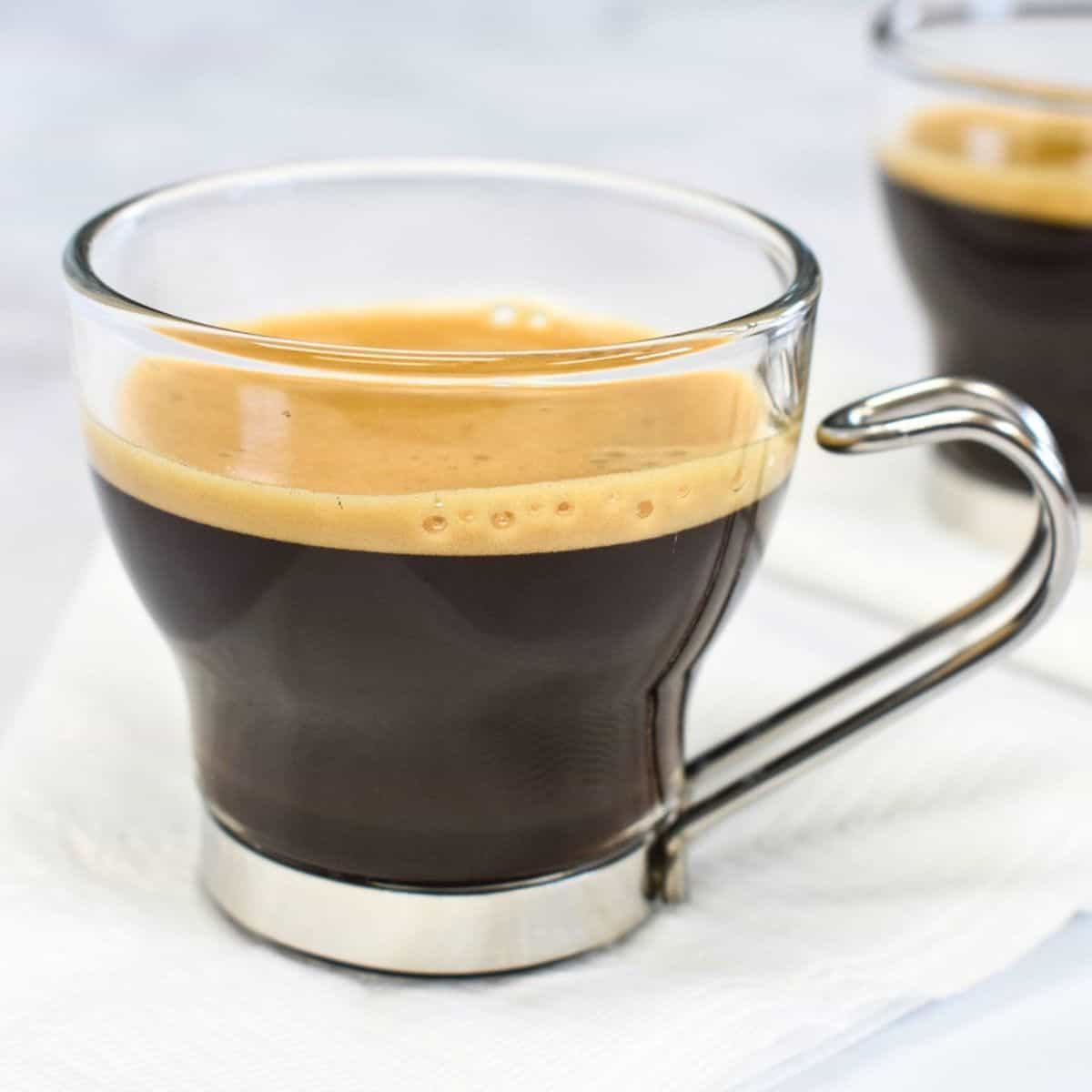
Jump to:
Fun Facts About Cuban Coffee
☕ It has less caffeine than you think.
Because it's served in small portions, a cafecito actually has less caffeine than a full cup of American drip coffee-even though it feels more intense!
🥄 The espumita is part science, part tradition.
Beating sugar with the first drops of espresso creates that signature sweet foam-and it's a step generations have passed down.
💃 It's often a social ritual.
A colada isn't just for you-it's meant to be shared. Handing out those tiny plastic cups is part of the experience-show up with a colada at the salon, the mechanic, or… anywhere, and watch faces light up.
🌅 Cafecito time is a real thing.
In many Cuban households (and Miami offices!), cafecito time happens like clockwork-often around 3 p.m.
Ingredients & Equipment
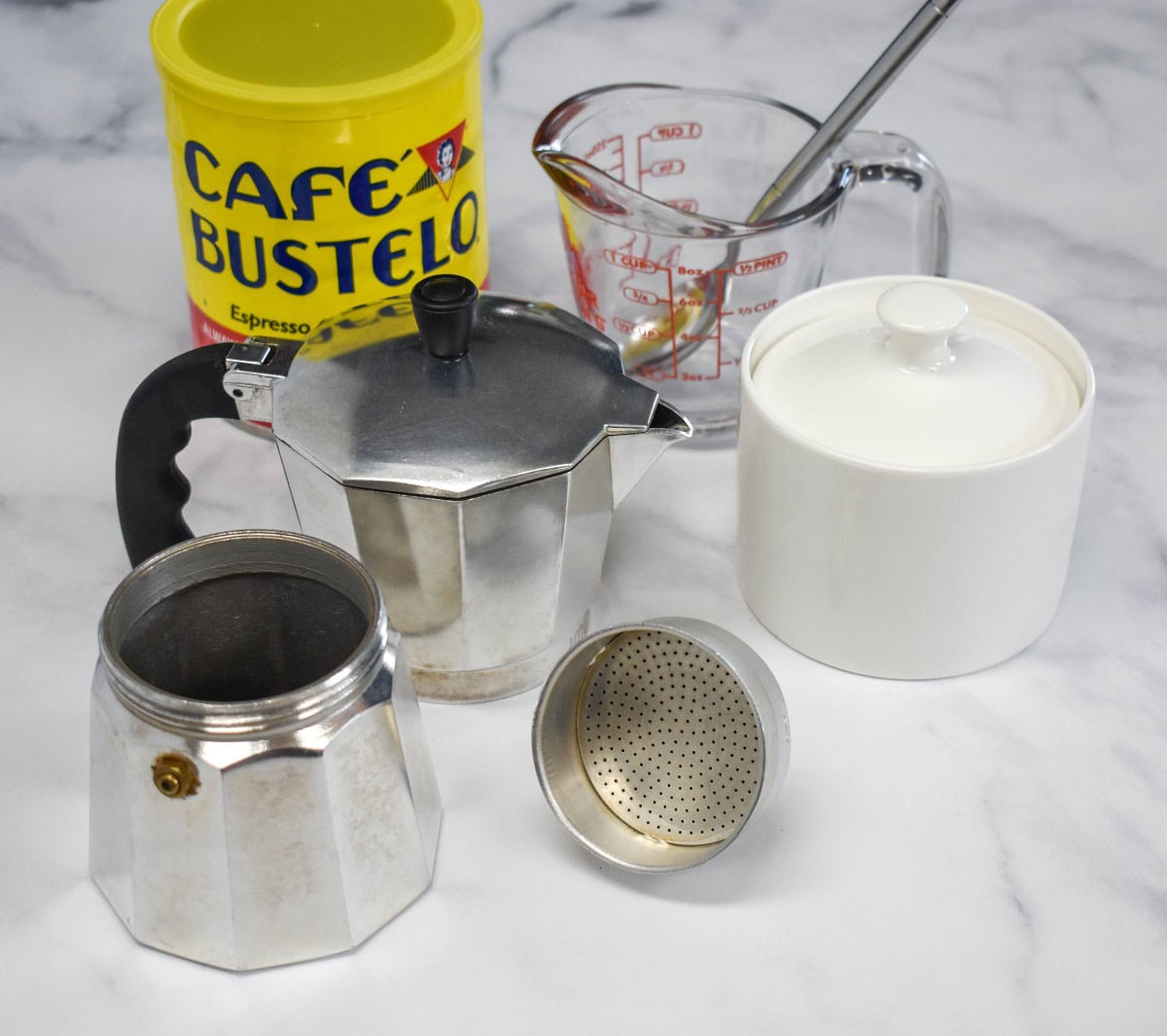
Here's what you'll need to make authentic Cuban coffee at home.
- Coffee - Use finely ground espresso-style coffee. Popular brands include Café Bustelo, Café Pilon, and Café La Llave. These are dark roast coffees that come pre-ground in bricks or tins.
- Sugar - White granulated sugar is most common and works great. Raw cane sugar (what I use) also works well-it beats like granulated and helps create that signature espumita.
- Water - Use cool, fresh water to fill the base of the Moka pot.
- Moka pot (stovetop espresso maker)
Also called a cafetera in Spanish. This three-piece pot brews rich, concentrated espresso on the stovetop. It includes:- A bottom chamber (for water) fill just below the safety valve, a small metal release built into the side that helps prevent pressure buildup
- A funnel-shaped filter (for coffee)
- A top chamber (to collect brewed espresso)
- Spoon - Used to beat the sugar with the first few drops of coffee to create espumita.
- Measuring cup or sturdy cup - You'll need something strong enough to stir the sugar and coffee vigorously. A small glass or metal measuring cup works perfectly.
- Note - I use a standard 1-cup Moka pot. If you're using a different size, adjust the water, coffee, and sugar accordingly.
How to make Cuban coffee

- Fill the Moka pot: Add cool water to the bottom chamber up to the valve. Insert the filter and fill it with espresso ground coffee. Level off but don't pack it down.
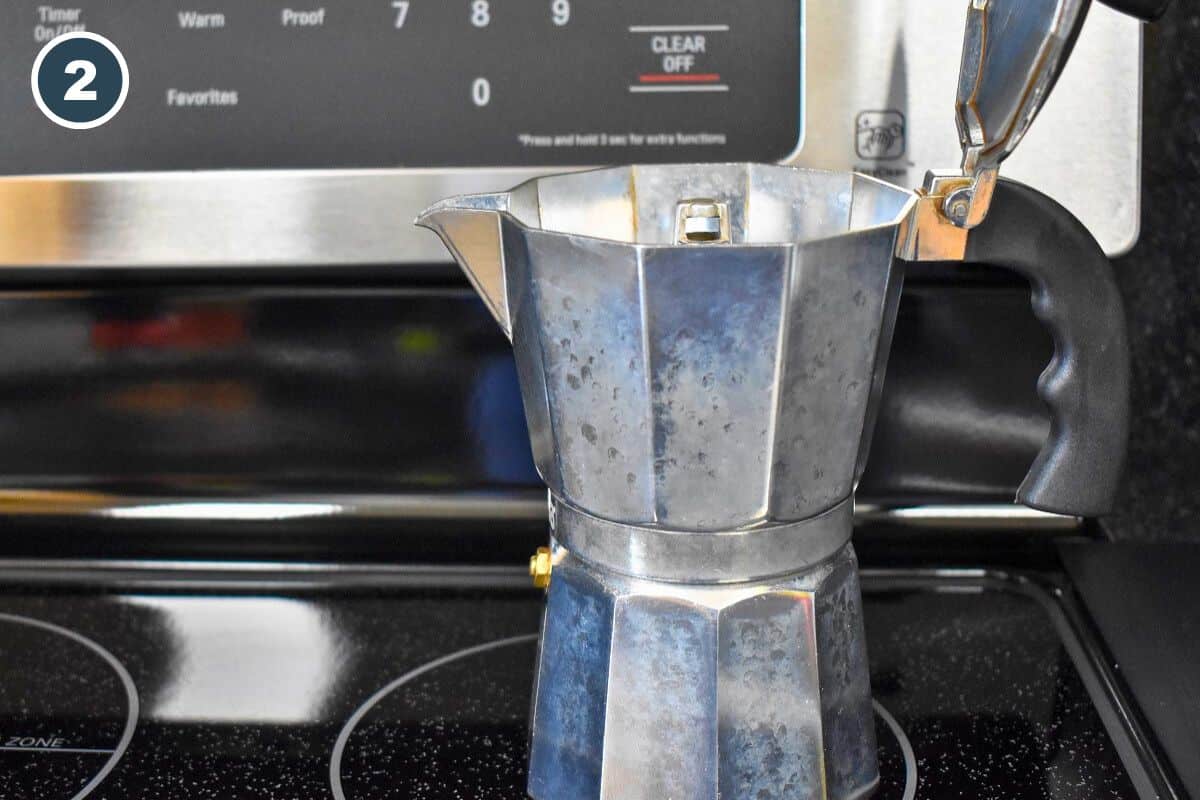
- Assemble and heat: Screw on the top of the pot and place it on the stove over medium-high heat. Leave the lid open so you can see when it starts to brew.
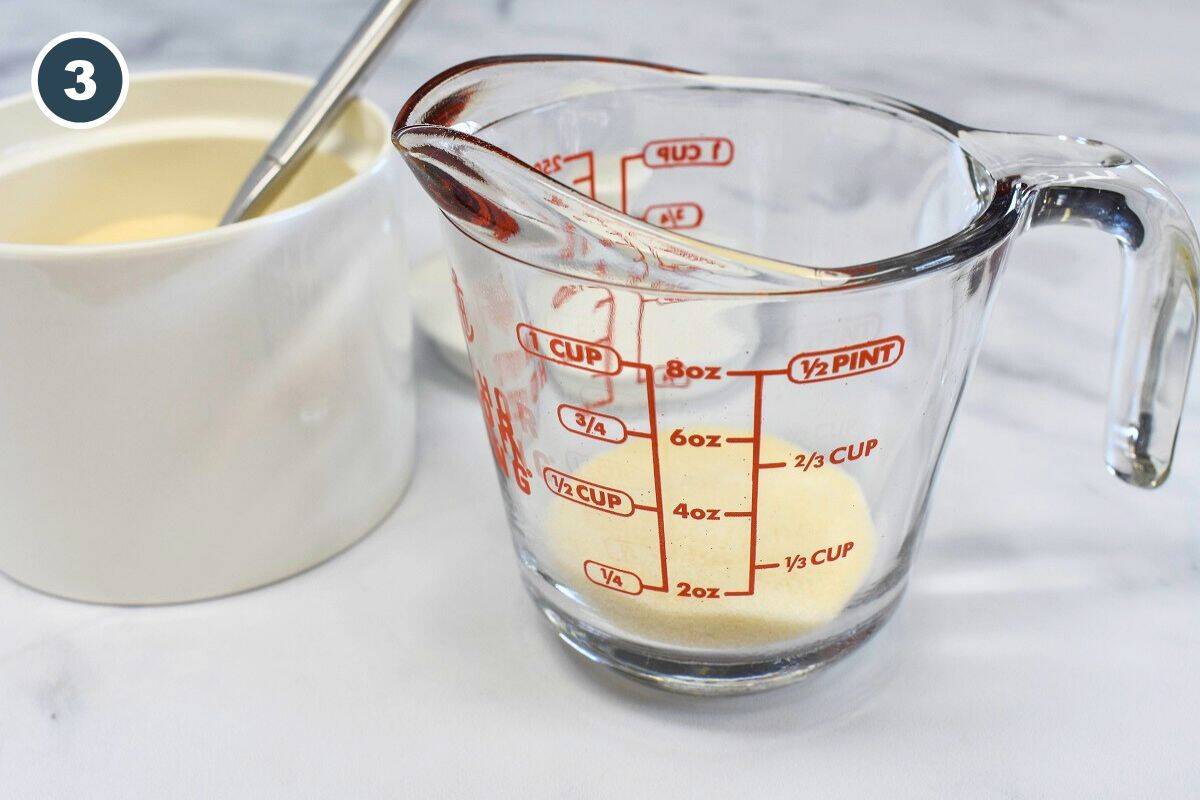
- Prepare the sugar: Add 3½ heaping teaspoons of sugar to a sturdy measuring cup or small bowl.
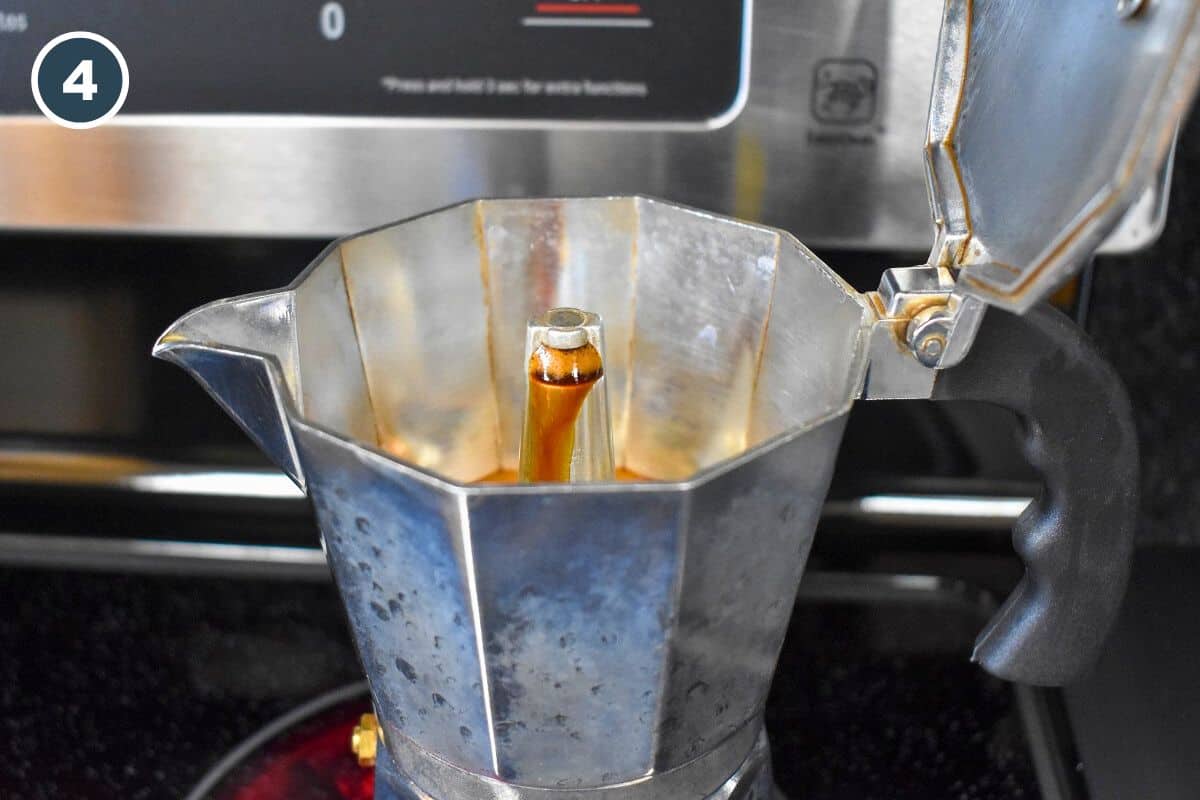
- Start the foam: As soon as the coffee begins to brew, remove the pot from heat and spoon about 1 teaspoon of that first, strong brew into the sugar.
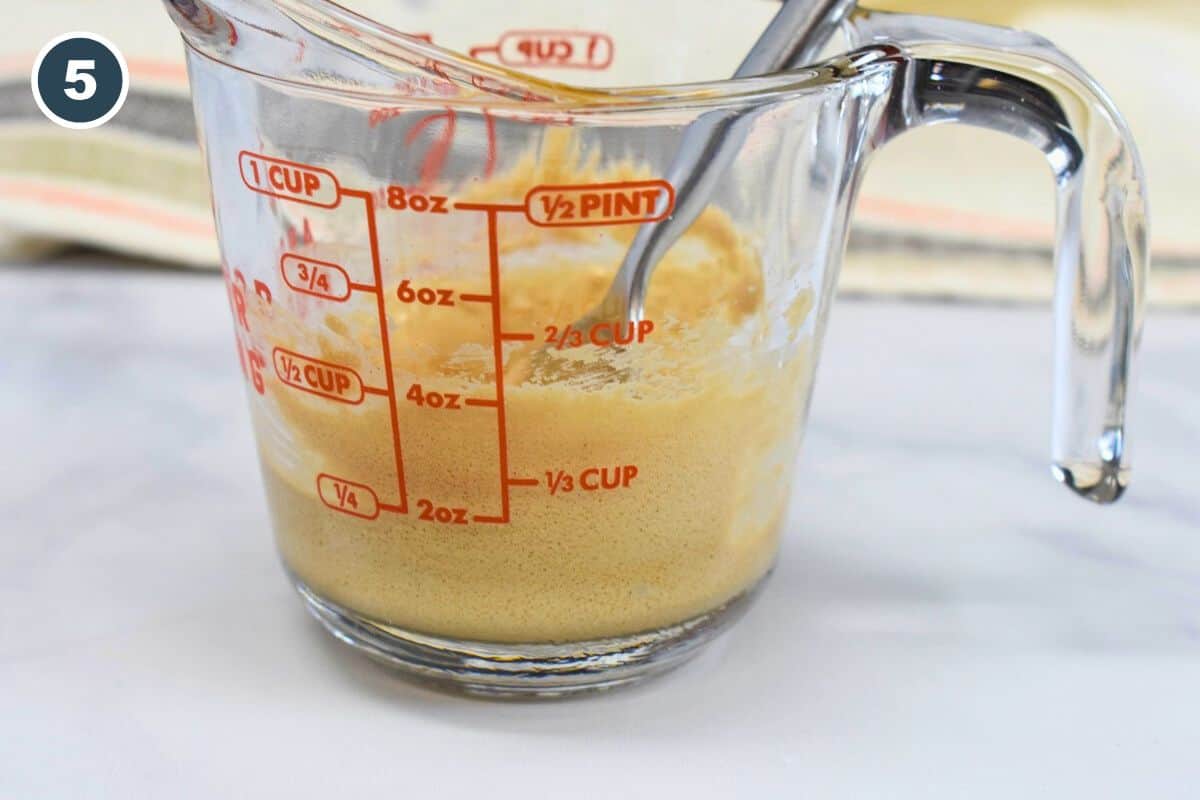
- Beat the sugar and coffee: Vigorously stir the sugar and coffee together until the mixture lightens in color.
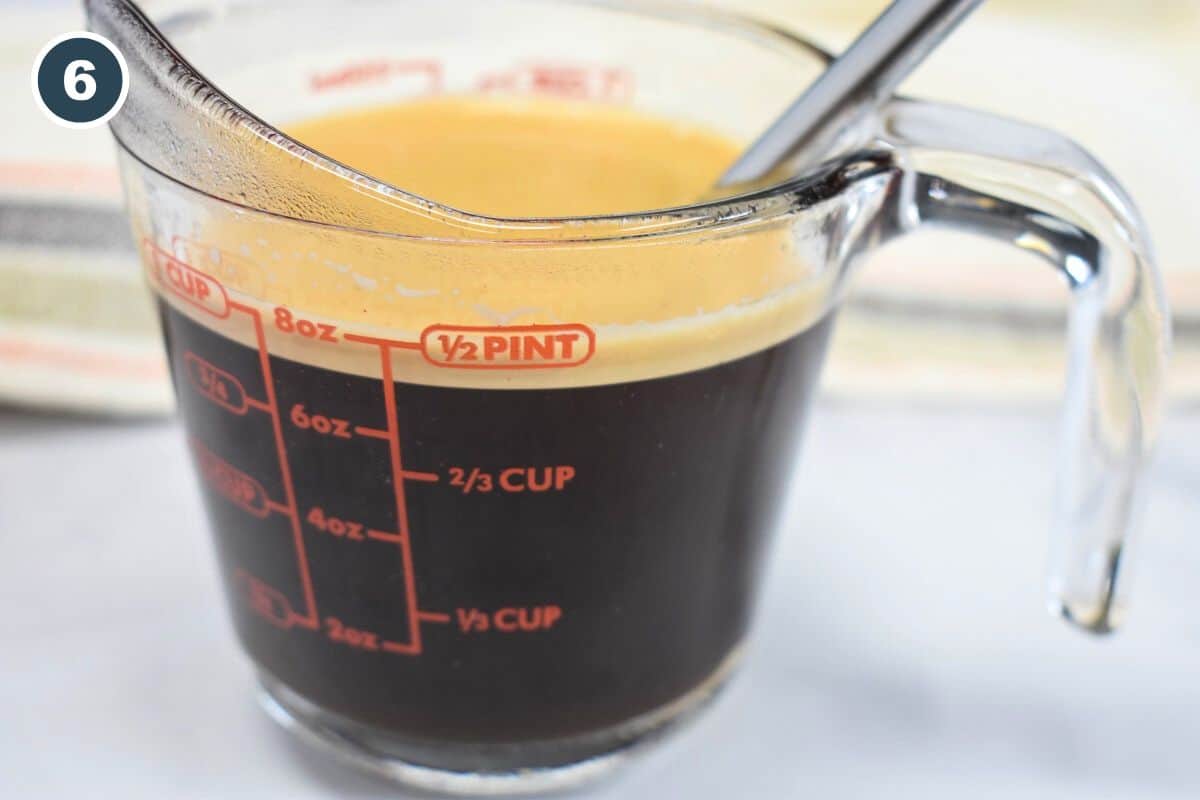
- Combine and serve: Pour the rest of the brewed coffee into the sugar mixture and stir gently to combine. Serve immediately.
How it's served
Cuban coffee can be served a few different ways, depending on where you are and how many people you're serving.
Colada - If you order a colada from a cafeteria window (ventanita), you'll usually get a 4-ounce Styrofoam or paper cup filled with strong, sweet Cuban coffee-plus several little plastic cups (about ¾ ounce each) for sharing. It's meant to be split among friends, coworkers, or whoever's nearby-yes, even strangers!
Espresso cup (tasita) - At home or in a sit-down restaurant, Cuban coffee is typically served in a small espresso-style cup, either ceramic or glass, and holds around 2 to 3 ounces.
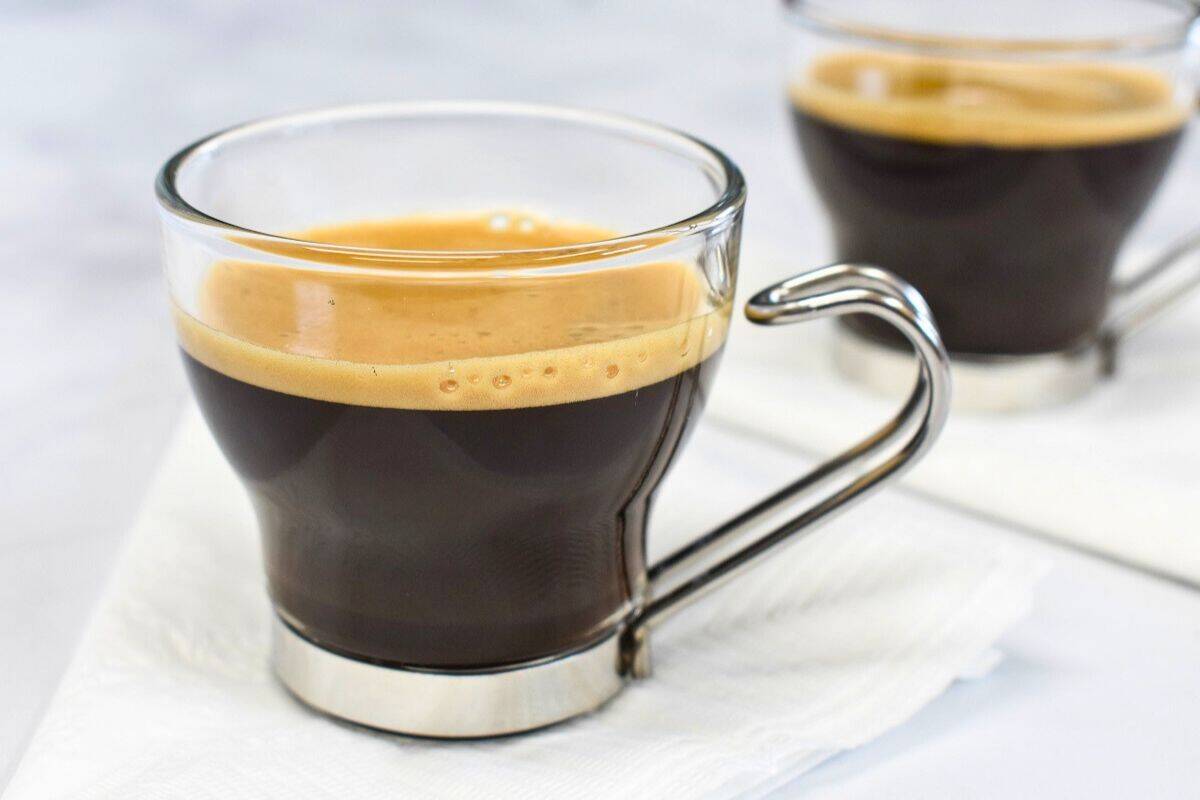
A pastelito de carne, buttery toast, or a couple of empanadas are all perfect alongside a hot cafecito.
Substitutions and variations
There's more than one way to enjoy a cafecito! Here are a few simple swaps and popular ways to change it up.
- Use decaf - If you love the taste but want to skip the caffeine, use finely ground decaf espresso. The rest of the process stays the same.
- Try different sweeteners - Granulated white sugar is traditional, but raw cane sugar also works well and still produces a good espumita. Brown sugar adds a deeper flavor, though it may produce less foam. Liquid sweeteners like honey or agave won't whip into espumita, but they're great stirred in at the end.
- Add milk - Turn your cafecito into a cortadito by adding a splash of steamed milk, or go full café con leche by combining steamed milk with Cuban coffee. Adjust the ratio to your taste!
Frequently asked questions
You can find Moka pots online from retailers like Amazon, Walmart, or Target. They're also available at many home goods stores. Even the budget-friendly models work great-and they only get better with use.
Yes! You can skip the sugar and beating step if you prefer unsweetened coffee. Just brew the coffee as directed and enjoy it as-is, or stir in your favorite sugar-free sweetener at the end.
Yes, you can use an electric espresso machine if you have one. That's actually how many restaurants and cafés prepare Cuban coffee. Just make sure to grab a bit of the first brew to make the espumita (if you're using sugar), or serve it straight if you're skipping that part.
Cuban coffee is technically espresso, but it's unique because of the espumita. This sweet whipped layer is made by beating sugar with the first drops of brewed coffee, giving it a creamy top and signature flavor. Without the espumita, it's just straight espresso.
Making Cuban coffee at home is more than brewing a strong cup-it's about sharing, connecting, and carrying on tradition. Whether you're sipping from a tiny tasita or passing around a colada, a cafecito always hits just right.
If you're looking for more Cuban flavors to go with your coffee, try one of these classic favorites:
- Cuban Sandwich (Cubano)
- Medianoche (Midnight Sandwich)
- Pan con Bistec
You can also browse more in our Cuban recipes collection for meals and sides that bring those same bold, comforting flavors to the table.
Join Us
Subscribe to our Newsletter to get the latest recipes, cooking tips, and kitchen inspiration delivered straight to your inbox. Don't forget to follow us on social media for daily recipe ideas and more!
📖 Recipe

How to Make Cuban Coffee (Café Cubano)
Equipment
- Moka pot (stovetop espresso maker)
- Spoon
- Small glass or metal measuring cup (for beating sugar and coffee)
Ingredients
- 5.5 teaspoons Espresso-ground coffee such as Café Bustelo, Pilon, or La Llave - (for a standard 1-cup Moka pot, loosely packed amount depends on size of Moka pot)
- 3½ heaping teaspoons sugar white granulated or raw cane sugar
- 1.3 cup Water - to fill the base of the Moka pot up to the safety valve
Instructions
- Fill the Moka pot. Add cool water to the bottom chamber up to the safety valve. Insert the filter and fill it with espresso-ground coffee. Level off but don't pack it down.
- Screw on the top of the pot and place it on the stove over medium-high heat. Leave the lid open so you can see when it starts to brew.
- Prepare the sugar. Add 3½ heaping teaspoons of sugar to a sturdy measuring cup or small bowl.
- As soon as the coffee begins to brew, remove the pot from heat and spoon about 1 teaspoon of that first, strong brew into the sugar.
- Vigorously stir the sugar and coffee together until the mixture lightens in color.
- Pour the rest of the brewed coffee into the sugar mixture and stir gently to combine. Serve immediately.
Notes
Nutrition
The nutritional information above is computer generated and is only an estimate. There is no guarantee that it is accurate. This data is provided as a courtesy for informational purposes only.


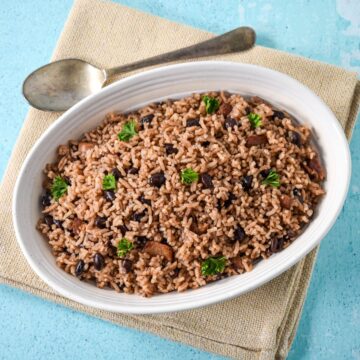

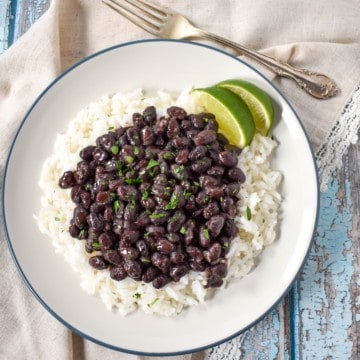
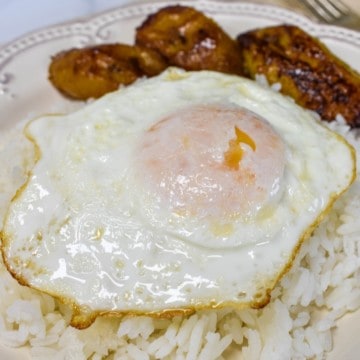
Deb
How long to brew, as I can’t see to measure 1/3 to 1/4?
Elizabeth
It is going to be quick. It only brews about a minute or two. The 1/3 to 1/4 brewed is to cover and turn off the heat. The residual heat on the burner will finish the brewing and the closing the lid is so it doesn't splatter everywhere. Hope that answers your question, thanks for stopping by.